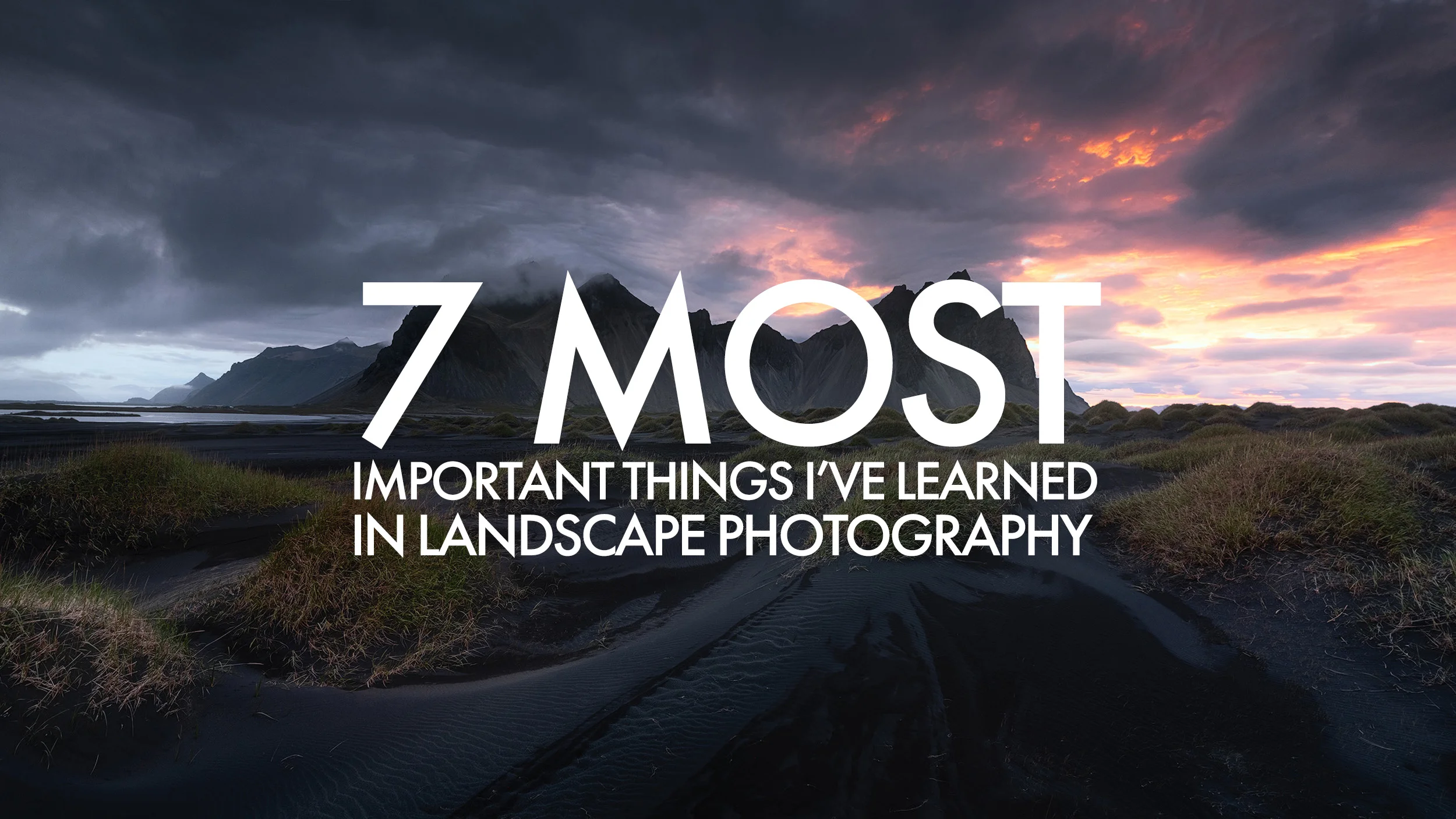Why is a super telephoto essential to landscape photography? In this video I look at what a telephoto lens, and more specifically, a telephoto with a longer reach like a 100-400mm gives you photographically that you can't find with any other lens
Read MoreI spent three weeks in November and December travelling around the US south west and the forests of the Pacific North west, a bucket list trip that I’ve wanted to do for years. The south west more than met my expectations, it’s an incredible stunning place with some of the most unique landscapes I’ve ever seen.
Read MoreThe deserted diamond mining town is slowly being reclaimed by the desert. It's a fascinated place to photograph, but comes with some challenges.
Read MoreI’ve been using the DJI Air 2S for about 3 months now. I bought it to replace my Mavic 2 Pro because I wanted something lighter for hiking but with the same quality output. The Air 2S has been with me now to Iceland and the Dolomites, and with the Mavic 3 Pro just about to be announced, here are my thoughts on this excellent little drone.
Read MoreThis winter I did two workshops in Lofoten, the first in February with Jonas from Vagabond Expeditions. I love Lofoten in Winter, it’s an amazing place and I was really excited this winter to be going there twice
Read MoreEarlier this year I was honoured to film one of their “Precious GFX” films for the Fujifilm X Stories channel. I took the GFX 50R with me on my trip to the Dolomites in January and put together a short film about the camera. You can see the results on the Fujifilm channel and on X Series website.
Read MoreThere are certain tips and pieces of advice that I find myself giving more than anything else during workshops or in response to email enquiries, and in this video I've tried to put them all together.
Read MoreI've just returned from 25 days in Indonesia, my first trip with Fuji cameras and my first trip without a large dSLR. We traveled the entire length of Java and Bali overland so it was important to me to have a camera that wouldn't feel heavy and cumbersome to carry around, but also one I could completely rely on to produce excellent image quality.
The experience of traveling with Fuji cameras has been a revelation! Not only in how much lighter, smaller and easier to carry around it all is, but how I've not once missed my old Nikon in terms of image quality or autofocus in any of the many situations I've encountered, from fast moving street scenes to dynamically lit landscapes. They've been brilliant, reliable and a consistent pleasure to use.
Read MoreFlying into La Paz must be one of the most dramatic introductions to a city anywhere! On the short flight from Sucre we looked out of the window at large dusty plain of the Altiplano below us and slowly the outskirts of El Alto, the La Paz suburb which has become a city in it's own right, began to appear. Then the massive peak of Illumani, the highest mountain in Bolivia, the top of which seemed to reach to the same altitude as our plane, loomed into view. Then, below us, the streets and buildings of El Alto seemed to disappear over the edge of a cliff beneath the peaks of the mountains and a valley which resembled a crater or a bowl appeared. Lining the sides of the crater and tumbling all the way to the bottom is the city of La Paz, or Cidade da Nuestra Señora La Paz (City of Our Lady of Peace) to give it it's full name.
Read MoreWe've just spent a long weekend in the Peneda Geres national park, in the far north of Portugal. It's a place I've been told about so many times, and have wanted to see for a few years now, and it's also the best place in Portugal for autumn colour.
Having said all that, I didn't regard this as a photography trip. By that I mean, I hadn't spent time researching locations to shoot, partly due to the fact that I'd had no time but mostly because I just wanted to spend three days away with Teresa, relaxing, reading, eating good food and seeing a new part of the country. Besides, the weather forecast was terrible, and I seriously didn't expect that we'd get more than a couple of hours without rain.
Read MoreFes was fantastic, but when the germ of the idea of coming to Morocco first took root in my head, it was to photograph sand dunes in the Sahara. Looking at the map, it seemed perfectly feasible, over to Morocco, a couple of hours down to Fes, and then it was just another 500 or so kilometers to Erg Chebbi, where the Sahara starts. How hard could it be?
<!--more-->As it turned out, it wasn't particularly difficult, but it was long. Driving 500km in Morocco takes a long time. The roads are generally pretty good, there's not that much traffic on them and contrary to my expectations, people on the roads were cautious and completely unaggressive. It was rare to see someone breaking the speed limit.
No, it takes a long time because what little traffic there is on the road, is generally slow moving trucks, and the road up into the middle Atlas, across the plateau at the top, and then down again on the other side at Errachidia, is often relatively winding
Like the Amazon, it's size and age, and the fact that humans are utterly insignificant in the face of it, barely scratching it's surface, leaves a deep impression












